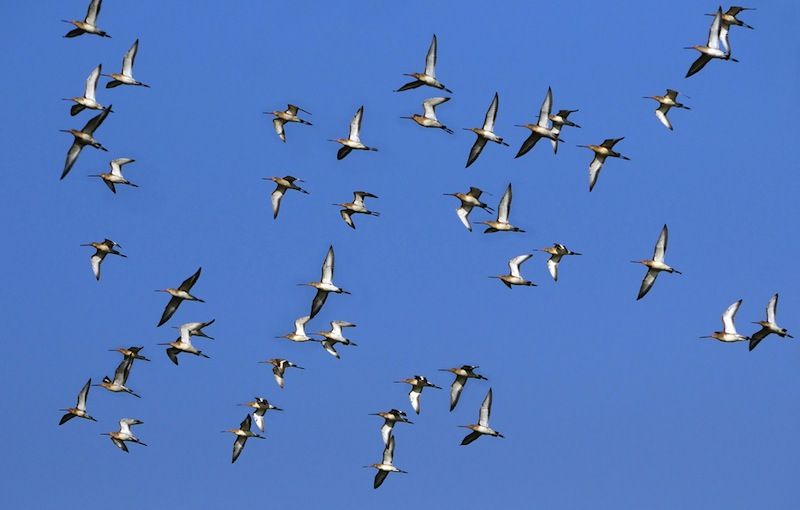
In the northern hemisphere, birds now return from their winter migrations sooner. Yet, ornithologists don’t know exactly how the birds adapted to return earlier. One possible explanation holds that individual birds changed their behavior to return sooner.
However, recent research observed that individual birds haven’t changed their schedules. Instead, the results of a 14-year-long study of a migratory shore bird species suggested that early-born birds get more worms and can migrate sooner.
Unexpected Victims of Climate Change
In the study, an international network of more than 2,000 volunteer birdwatchers recorded sightings of Icelandic black-winged godwits (Limosa limosa islandica) migrating from Portugal and Spain to Iceland between 1999 and 2004. The citizen scientists observed that individual birds returned on nearly the same date each year. As these birds returned each year to find an earlier greening of Iceland, the monogamous mated pairs of godwits could nest and hatch eggs sooner. The new generation of birds matured and began their migration cycle earlier.
These early travelers could then stake out prime over-wintering locations. Having an early winter refuge then primed the birds to return to the land of their birth sooner. After a few generations of this process, whole populations of birds arrived sooner on average, although each bird kept the same yearly schedule.
“Because we have been following the same birds for so many years, we know the exact ages of many of them,” said lead author Jenny Gill of the University of East Anglia in a press release. “We found that birds hatched in the late 1990s arrived in May, but those hatched in more recent years are tending to arrive in April. So the arrival dates are advancing because the new youngsters are migrating earlier.”
10 Ways Warmer Winters Wreck Earth
Sign up for the Live Science daily newsletter now
Get the world’s most fascinating discoveries delivered straight to your inbox.
The study focused on the Icelandic subspecies of black-tailed godwit. This bird migrates a relatively short distance which allows it to arrive several weeks before the breeding season begins. This window of time may allow the bird to nest sooner if an early spring provides enough insect food and vegetation for nest building.
Gill and her colleagues suggested that one reason long-distance migrating bird populations have declined more in recently years could be that these travelers have shorter windows of time between their return north and the start of nesting season.
The Proceedings of the Royal Society B published the results of the godwit study.
This story was provided by Discovery News.












